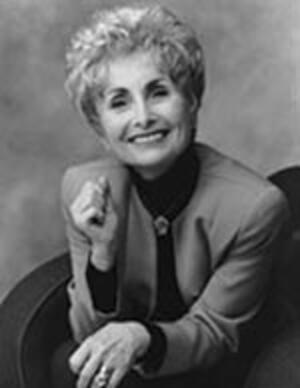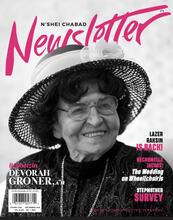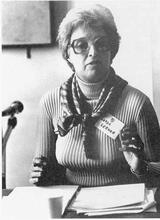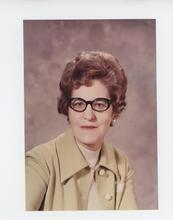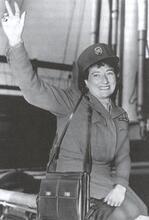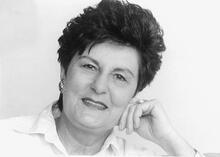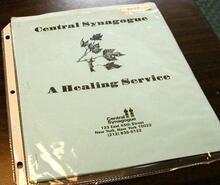Ba'alot Teshuvah: Jewish Women Who Become Orthodox
During the past half century or so, a sector of Jewish women raised secular, moderately observant, or “just Jewish” has decided to become Orthodox. Despite feminist ideology that views the strict observance of religion as repressive, these Ba’alot Teshuvah have taken on stringent religious practices that are often in opposition to their liberal upbringing. Although participants’ motivations differ and varying national contexts shape their experiences, research since the 1980s has consistently found that the women find fulfillment in the traditional roles of wife and mother, relish the warmth of Orthodox communities, and feel intellectually stimulated by new learning. Ba’alot Teshuvah seek a sense of rootedness in a pre-existing and growing Orthodox Jewish community.
“Returning” to Judaism
In response to the countercultural movement in the 1960s and 1970s, a sector of Jewish young adults in the United States began to explore religion. Seeking meaning, intellectual stimulation, and community, they undertook a spiritual search that often entailed travel, study, and engagement. This search resulted in a decision on the part of some to become Orthodox. These Ba’alei (masc. pl.) and Ba’alot (fem. pl.) Teshuvah decided to “return” to or turn toward traditional Judaism after having been raised secular, moderately observant, or “just Jewish.” In changing their religious direction, they made a commitment to adhere strictly to Jewish law and take on religious practices such as keeping Term used for ritually untainted food according to the laws of Kashrut (Jewish dietary laws).kosher, observing the Sabbath and festivals, and reciting prayers daily. The Ba’alot Teshuvah came to accept norms around gender separation and restrictions on their speech and personal appearance, which conflicted with feminist ideology. Because the division of gender roles is the sharpest in the Orthodox community, Ba’alot Teshuvah offer a means to explore the pivotal role of gender in shaping the religious life of Jews.
Two early studies of both women and men who became Orthodox provide valuable information on the development of the Teshuvah movement and institutions of learning. Janet Aviad’s Return to Judaism: Religious Renewal in Israel (1983) described a cohort of young adults mostly from Israel, Western Europe, and the United States who were attending yeshivas in Israel. Aviad identified four modes of Teshuvah: deliberate search (for a religious or value system), internal processes (inner world), external factors (interactions and events), and community (connecting with others and belonging). Among these, women had a greater affinity than men for the community mode. Herbert Danzger’s Returning to Tradition: The Contemporary Revival of Orthodox Judaism (1989) reported that most of the newly Orthodox were women and that women were more likely than men to turn to a religious way of life out of a desire to have a family. He provided a gendered analysis of the different routes by which women and men entered the world of Orthodoxy. Many of the men were religious seekers who ventured into yeshivas to seek deeper knowledge. The women were less likely to be on a spiritual quest; they tended to become Orthodox through synagogue programs and marriage.
Initial Studies of Ba’alot Teshuvah
In 1991, the first two book-length sociological studies specifically of newly Orthodox Jewish women in the United States were published: Debra Renee Kaufman’s Rachel’s Daughters: Newly Orthodox Jewish Women and Lynn Davidman’s Tradition in a Rootless World: Women Turn to Orthodox Judaism. Both books began with the experiences of Ba’alot Teshuvah and explored how these women negotiated within traditional religious institutions in order to find a meaningful place for themselves. Both authors developed an analysis of the meaning of Orthodoxy from the point of view of women and the reasons contemporary secular women are attracted to it.
The Ba’alot Teshuvah’s decision to explore Orthodox Jewish ways of life represents one possible solution to questions about women’s proper roles. The structural changes in American society in the twentieth century, in particular the changing demographics of women’s educational, occupational, marital, and childbearing patterns, occasioned a debate about women’s nature and social roles similar to the late nineteenth-century “woman question” that followed the Industrial Revolution. Western society witnessed a wide variety of competing definitions and prescriptions for women’s roles, far more than for men’s roles. Traditionalists clash with women’s liberationists, and even within the various feminist communities there are numerous alternative visions. For example, women who choose Orthodoxy might espouse liberal, egalitarian feminist solutions for the workplace but a more traditional option for their personal lives.
In her interview-based study of married Ba’alot Teshuvah who had been Orthodox for several years, Kaufman presented the women’s perspectives on their role in Orthodoxy. Despite their acceptance of traditional roles, these women did not necessarily view themselves as second-class citizens of the Jewish community. Rather, they turned their devalued status in the secular world into a higher status by adopting the roles the Orthodox community offers. Orthodoxy appealed to these Ba’alot Teshuvah precisely because of its positive valuation of the feminine and the female in the context of the nuclear family. Kaufman concluded that there were strong similarities between Ba’alot Teshuvah and radical feminists, since both groups participate in sex-segregated communities that celebrate gender differences.
Davidman, in her comparative ethnographic study of modern Orthodox and Lubavitch Hasidic communities, also found that, in the context of confusion about gender and family norms in the wider society, Orthodoxy appealed to the new recruits because it offered clarity about gender and prescriptions for family living. Her findings suggested, however, that Ba’alot Teshuvah were not postfeminist, as Kaufman contended, but rather were attracted to Orthodoxy because they saw it as a socially legitimate alternative to feminism. Instead of the feminist program of broader gender definitions, sexual liberation, emphasis on careers, and acceptance of a variety of family patterns, Orthodox Judaism proposes clearly circumscribed gender norms, control of sexuality, assistance in finding a partner, and explicit guidelines for nuclear family life.
The two types of Orthodox communities Davidman studied differed greatly in their willingness to blend traditional conceptions with modern gender ideals. Davidman showed how these differences led each setting to attract a different type of women. The Lubavitch Hasidic community, which prohibits premarital physical contact between women and men, publicly eschews birth control, and trivializes women’s interest in professionalism, attracted relatively young women who were not yet established in careers or independent lives. In contrast, the modern Orthodox community offers a complex blend of the traditional and modern that attracted single, professionally established, independent adults seeking assistance in forming nuclear families.
Both Davidman and Kaufman argued that Ba’alot Teshuvah found Orthodox Judaism appealing precisely because it offers a conception of femininity in which women’s roles as wives and mothers are honored and seen as central. Nevertheless, as sociologists of religion point out, there is a “fit” between religious institutions and the needs of the individuals who seek them out. Thus, each newly Orthodox woman is attracted to the Orthodox vision of Jewish womanhood that best suits her particular life circumstances. Modern Orthodox rabbis articulate a vision of femininity that not only prioritizes women’s roles in the home but also allows women to seek secondary fulfillment in other spheres, such as careers. This conception matched the needs of the women in the modern Orthodox community Davidman studied, who described themselves as being “settled” at work but wishing to develop a role and identity at home. The Lubavitch rabbis, by contrast, offer a definition of femininity that focuses exclusively on women’s roles as wives and mothers, a vision attractive to the Lubavitch Ba’alot Teshuvah, who seek one all-embracing role. In the context of a differentiated society, these diverse groups of women are able to seek out those religious communities that validate their individual life choices and give them meaning.
Geographic Diversity
More recently, Roberta Sands and Dorit Roer-Strier have examined the impact of a daughter’s turn toward Orthodoxy on the family, particularly the mother-daughter relationship, in a variety of national contexts. The locations of these studies offered different social, economic, and historical contexts for the process of religious change. In South Africa, the Ba’alot Teshuvah were influenced by charismatic teachers of Judaism and peers with whom they attended classes sponsored by outreach groups. The classes offered them a value base that could anchor them securely in a country torn apart by racial unrest and a Jewish community they saw as excessively materialistic. The Ba’alot Teshuvah from the United States were looking for consistency, having grown up in a society that professes to value diverse religious, racial, gender, and ethnic groups but does not always accept these differences; these Ba’alot Teshuvah were exposed to democratic principles and the belief that women could have successful careers. The women from Argentina sought stability, having grown up amidst periodic acts of antisemitism, including the bombing of the Israeli embassy in Buenos Aires and the destruction of a central Jewish community building, and pressures experienced by their families from economic downturns and unemployment. In both South Africa and Argentina, Jews left the country for Israel or other parts of the world. Minny Mock-Degen (2009) conducted a similar study of Dutch mothers and their Ba’alot Teshuvah daughters. The decision to do Teshuvah on the part of the Dutch daughters was influenced by the families’ experiences during the Shoah. Most of the mothers were Holocaust survivors who lost parents and other relatives, and some parents and children were in hiding during the war. Mock-Degen posits that the Ba’alot Teshuvah daughters had a high need to affirm their Jewish identity, to be part of a religious community, and to maintain intergenerational continuity. In all locations studied, teshuvah by peers in Jewish youth groups, a partner, and ethnic pride affected the women’s decisions to become Orthodox.
In all the national contexts, many mothers initially had difficulty accepting their daughters’ religious changes. A few were happy their daughters were settling down, but others were troubled by alterations in their daughters’ appearance (long skirts, long-sleeved blouses, wigs or scarves covering their heads, etc.) and restrictions on their grandchildren’s secular education. The American mothers were disappointed that their daughters, and most likely their grandchildren, would not go to college or become professionals. Nevertheless, the mothers and daughters in all national contexts preserved their relationships and accommodated to the changes. Remarkably, some parents became kosher and followed their daughters into Orthodoxy.
Linguistic and Spiritual Socialization
Two more recent studies of men and women who became Orthodox identified relevant gender differences and described issues particular to Ba’alot Teshuvah. These are Sarah Bunin Benor’s Becoming Frum: How Newcomers Learn the Language and Culture of Orthodox Judaism (2012) and Roberta G. Sands’ The Spiritual Transformation of Jews who Become Orthodox (2019). Although gender was not the focus of these books, it emerged in discussions of differences in the Orthodox community between men and women.
Benor conducted an ethnographic sociolinguistic study of men and women in the process of acquiring the educational, linguistic, and cultural knowledge needed to operate effectively in an Orthodox community. She found that women were distinctive in their mode of dress and language use. They wore long skirts and tops and covered their hair in ways that distinguished them from men and secular women. The dress of both women and men also signaled their position on the continuum of Orthodox groups, from the more liberal Modern Orthodox to the stringent Black Hat group. Women and men both adopted some features of Orthodox language as they became increasingly integrated into Orthodox communities, but while both used loan words from Hebrew and Yiddish, those who had attended a yeshiva or seminary used more; men picked up some loan words and some Aramaic from their Talmudic studies, to which women did not have access because of gender restrictions.
Roberta Sands also discusses the socialization process, formal and informal, of men and women who join a pre-existing Orthodox community. She describes the gradual process of transformation through which Ba’alei and Ba’alot Teshuvah remake all aspects of their lives, from their appearance to their daily interactions, beliefs, relationships, values, and religious practices. Sands views spirituality and religion as interconnected, a departure from New Age spirituality, which is separate from religion and largely emotional. She highlights the spiritual-religious struggles participants found challenging and the ways in which they incorporated spirituality into their daily lives. Sands paid specific attention to women’s struggles over feminist ideology, which for many was a barrier to becoming Orthodox. Many Ba’alot Teshuvah had difficulty accepting norms such as covering their hair, wearing modest dress, sitting in a separate section behind a barrier (mechitzah) in their synagogue, and, for some, going to the going to the mikveh (ritual bath) regularly. Some missed practices accepted in their previous synagogues, such as women leading services and singing aloud. Over time, the Ba’alot Teshuvah found ways to work around practices they found objectionable and/or reframed these practices as empowering and spiritually uplifting.
Sands also discusses the social and academic learning required by those who become Orthodox. They learned social norms informally through observation, instruction from others, and being corrected. The community’s expectations for Jewish religious academic learning are greater for men than for women, as there is a great emphasis on studying the Lit. "teaching," "study," or "learning." A compilation of the commentary and discussions of the amora'im on the Mishnah. When not specified, "Talmud" refers to the Babylonian Talmud.Talmud and other holy texts for Orthodox men. Male Ba’alei Teshuvah who lack sufficient background in Hebrew and Aramaic have difficulty keeping up with men who were raised Orthodox, and they often feel anxious and self-conscious about their deficiencies. While both men and women attended classes to further their knowledge, the women expressed greater excitement over their learning (Sands, Spero, & Danzig, 2007). Men also conveyed concern about reconciling their work with religion, whereas women downplayed work. Consistent with Aviad and Kaufman, Sands et al. found community to be very important for women, who enjoy volunteer work and engaging in acts of loving-kindness (hesed). With religious spaces in Orthodox communities dominated by men, women derived satisfaction in the social spaces available to them.
When one compares the Ba’alot Teshuvah described in studies of the last two decades of the twentieth century with those of the first two decades of the twenty-first, one sees how historical context affects the process. The early studies were conducted during a period of social and political turmoil, when youth had lost faith in the government, which had undermined civil rights at home and engaged in unjust wars abroad. Furthermore, young people found materialistic goals lacking in meaning. Feminism was a relatively new phenomenon for young women, despite the existence of previous historical waves. The Jewish women of the 1980s and 1990s attended to the derision and distortion of feminism by the media and some of their contemporaries and resisted it through what they saw as the safety of the traditional religion and family roles. The Ba’alot Teshuvah of the twenty-first century, by contrast, were less concerned with politics but were also resistant to feminism. These women were, for the most part, professionals who felt that their careers were not enough. They found fulfillment in their families, observant friends, and religious community at the same time they worked. In contrast to the earlier cohort of women, whose foremost concern was marriage and family, these women were drawn to learning about Judaism through classes and social interaction with others.
Seminaries for Ba'alot Teshuvah
Makhon Orah, Jerusalem.
Midreshet Rahel v’Chaya College of Jewish Studies for Women, Jerusalem.
Neve Yerushalayim, Jerusalem.
She’arim, Jerusalem.
Beit Hannah (Lubavitch), St. Paul, Minnesota.
Jewish Renaissance Center, Manhattan, New York.
Lionel Goldman Seminary (Bostoner Rebbe), Brookline, Massachusetts.
Aviad, Janet O. Return to Judaism: Religious Renewal in Israel. Chicago: University of Chicago Press, 1983.
Benor, Sarah Bunin. Becoming Frum: How Newcomers Learn the Language and Culture of Orthodox Judaism. New Brunswick, NJ: Rutgers University Press, 2012.
Danzger, M. Herbert. Returning to tradition: The contemporary revival of Orthodox Judaism. New Haven: Yale University Press, 1989.
Davidman, Lynn. Tradition in Rootless World: Women Turn to Orthodox Judaism. Berkeley, CA: University of California Press, 1991.
Kaufman Debra Renee. Rachel’s daughters: Newly Orthodox Jewish Women. New Brunswick, NJ: Rutgers University Press, 1991.
Mock-Degen, Minny E. The Dynamics of Becoming Orthodox: Dutch Jewish Women Returning to Judaism and How their Mothers Felt about it. Amsterdam: Amphora Books, 2009.
Roer-Strier, Dorit, and Roberta G. Sands. “Families Challenged by Religious Change: A Cross- cultural Comparison of Mothers’ Images of their Daughters.” Families in Society: Journal of Contemporary Social Services, 85, no. 4 (October-December 2004): 485-594. https:// DOI: 10.1177/104438940408500407.
Roer-Strier, Dorit, and Roberta G. Sands. “The Impact of Religious Intensification on Family Relations: A South African Example.” Journal of Marriage and Family, 63, no. 3 (August 2001): 868-880. https:// DOI: 10. 1111/j.1741-3737.2001.00868.x.
Sands, Roberta G. The Spiritual Transformation of Jews who Become Orthodox. Albany, NY: State University of New York Press, 2019.
Sands, Roberta G., Robyn Spero, and Rivka Danzig. “Gender Differences in the Construction of Spirituality, Work, Learning, and Community by Baalei Teshuvah.” Sex Roles, 57, no. 7-8 (August 2007): 527-541 https:// DOI: 10.1007/s11199-007-9286-1.
Sands, Roberta G., Dorit Roer-Strier, and Susana Strier. “From Family Research to Practice: Argentine Families Coping with the Challenges of Religious Intensification.” Families in Society, 94 no. 1 (January-March 2013): 53-60. DOI: 10.1606/1044-3894.4263.

